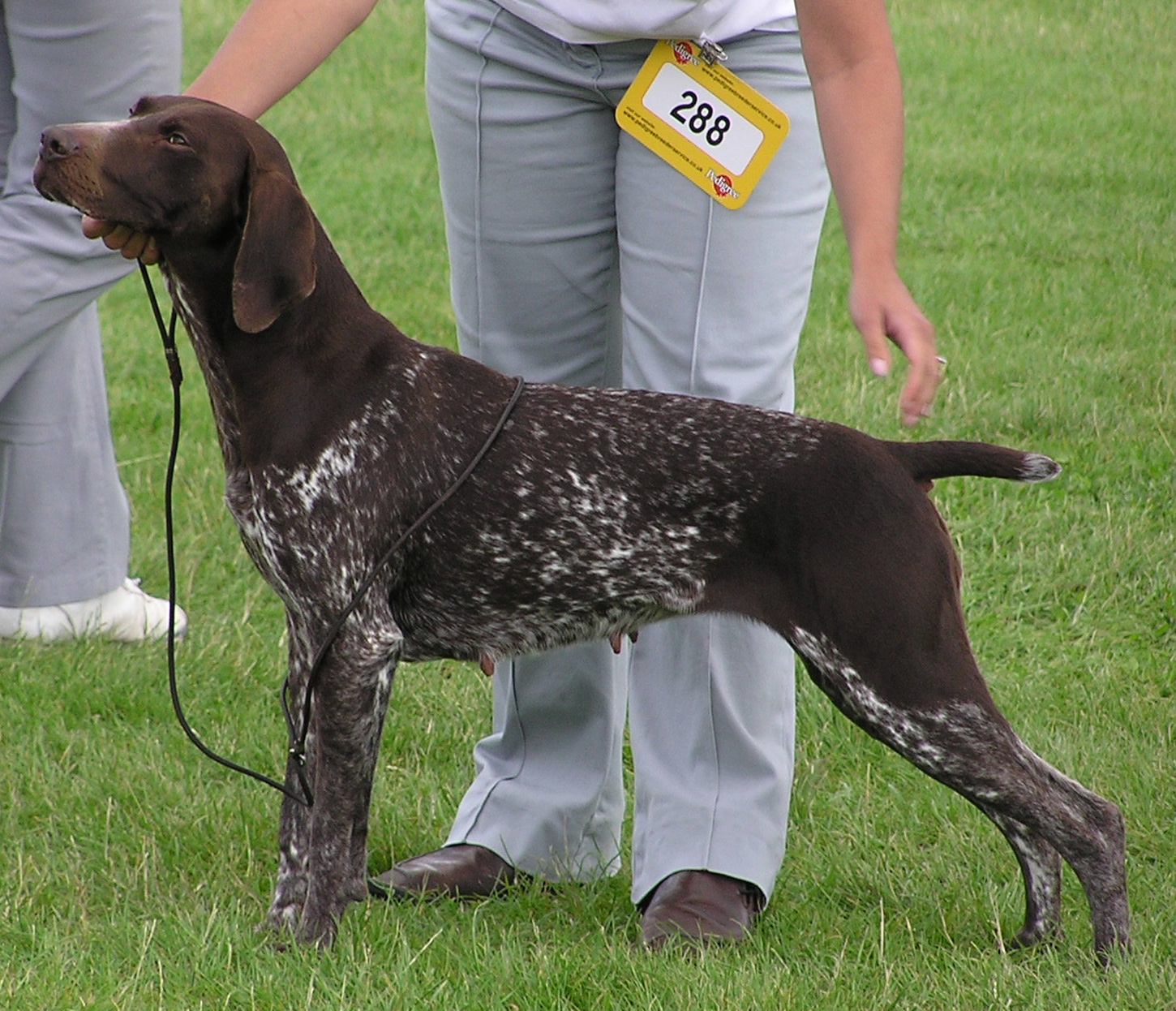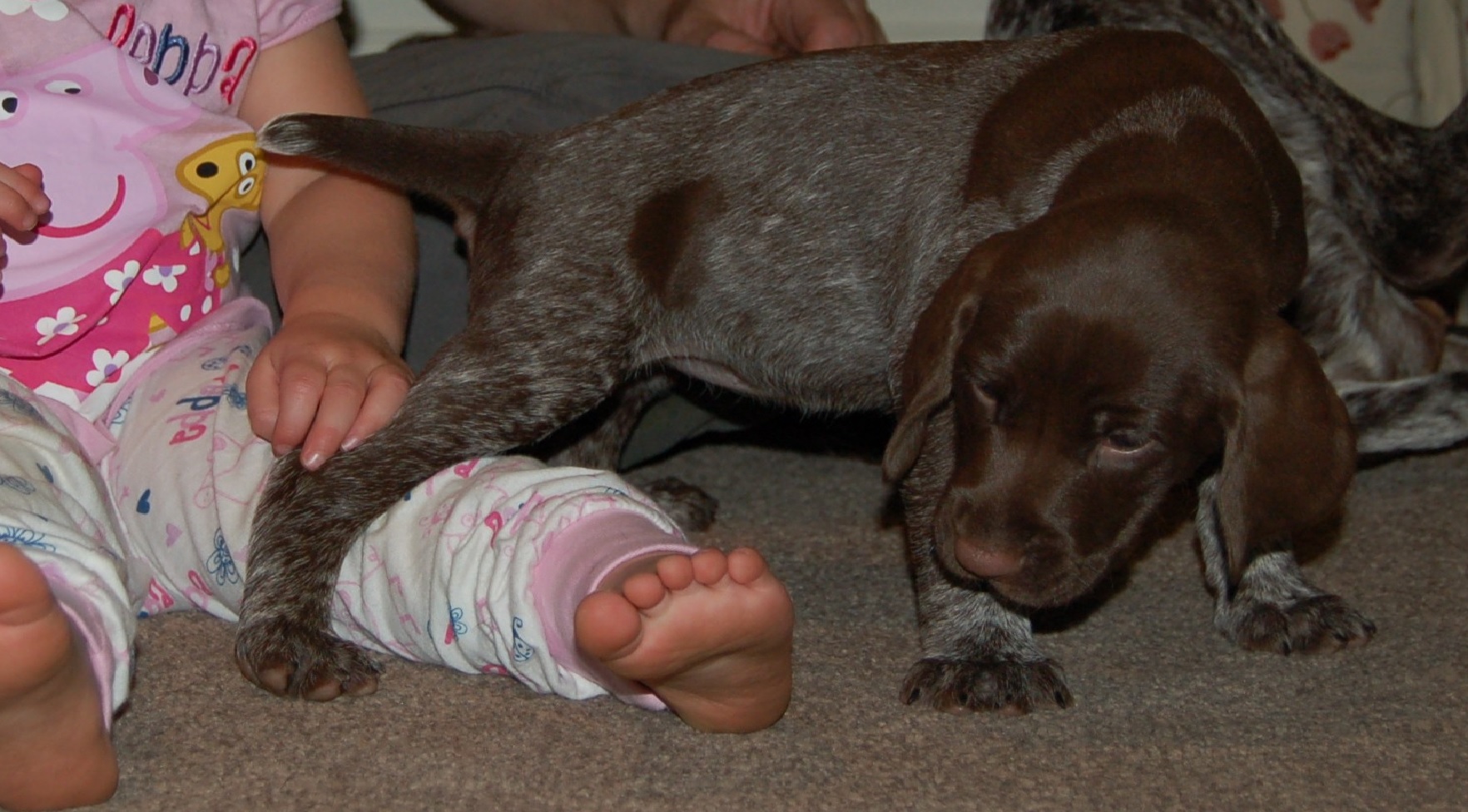Breed Profile – German Shorthaired Pointer
19/10/2015
History of Breed: It is thought that the German Shorthaired Pointer is descended from a collection of breeds known as ‘bird dogs’ that came to the UK following World War Two. One of the HPR (Hunt Point Retrieve) gundog breeds they are perfectly suited to hunting both on land and in water. They are strong and energetic, can run fast and jump very high. Their jaws are long enough and broad enough to cope with carrying even quite heavy game. They have a keen sense of smell and water resistant coats. In addition to this they are fiercely loyal and make competent guard dogs, as well as being fantastic family dogs.
Life Expectancy: 10-12 years.
Size of Dog: Medium large dog. The breed standards state that dogs should be a minimum height of 58cm and a maximum of 64cm at the withers, whilst for bitches the minimum is 53cm and the maximum is 59cm.
Features: The coat of the GSP is perhaps its most noticeable characteristic. Short, coarse and flat, and either solid black, solid liver, black and white ‘ticked’, black and white spotted, liver and white ‘ticked’ or liver and white spotted. German Shorthaired Pointers classically have a docked tail and are included in the list of hunt, point, retrieve breeds that are exempt from the Animal Welfare Act which banned tail docking. Other features of GSPs include their dark eyes, moderately long floppy ears and long, broad jaws for picking up game.
Energy Levels/Exercise Required: GSPs require lots of exercise, preferably about 2 hours a day. Like all intelligent breeds, they also react favourably to training and benefit hugely from plenty of games and mental stimulation. A lack of physical and mental exercise can lead to boredom and mischievous behaviour. Their combination of physiology and activity levels means that German Shorthaired Pointers benefit enormously from a diet that recognises their specific needs. However, this doesn’t mean that you need to go overboard with clever supplements or feeds. It does mean that increased protein and calorie levels should be offered as they move through junior and adult stages (depending on activity levels) and that feeds incorporating joint support supplements are a good idea. A good combination would be Heritage Growth, Heritage Adult and Heritage Senior through their life stages, as these feeds are formulated to provide all the basics for a high-energy breed, but include the relevant minerals, vitamins and supplements through a dog’s varied life.
Potential Health Issues: Hip dysplasia
Temperament: Incredibly loyal dogs, obedient, intelligent, gentle, bold and versatile.
Family Dog/Child Friendly: German Shorthaired Pointers make great family dogs. They are strong and can be boisterous in their younger years, so should be watched with young children, but their temperament makes them perfectly suited to the family home. Their hunting instinct can kick in with any small animal in the early years, which can cause problems in family homes with other smaller pets such as cats and rabbits. However, this intelligent breed can easily be taught the difference between legitimate and non-legitimate prey, so this is likely to be a temporary problem.
Likes: Plenty of exercise, activity and fun. Being part of a bustling family home.
Dislikes: Inactivity and lack of interaction.
References: Wikipedia and Kennel Club




